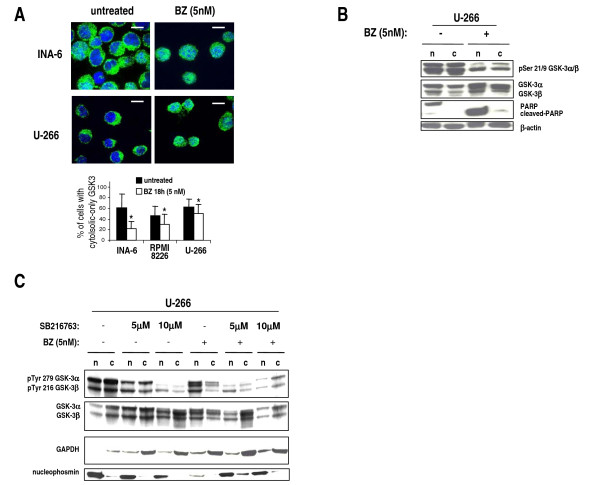Figure 6.
Bortezomib modulates GSK-3 intracellular localization and activation. (A) Immunofluorescence microscopy of INA-6 and U-266 cells untreated or treated with 5 nM BZ for 18 hours and stained for GSK-3 (green fluorescence) and the nuclei (DAPI, blue fluorescence) showing partial nuclear re-localization of GSK-3 upon BZ treatment. Scale bars = 10 μm. On the bottom, graph showing the percentage of MM cells scored as having cytosolic only GSK-3 in the untreated (black bars) or 5 nM BZ-treated (white bars) conditions. Data represent mean ± SD, n = 3. * indicates p < 0.05. (B) Representative WB analysis of phospho Ser 9 GSK-3β/Ser 21 GSK-3α and total GSK-3α/β in nuclear (n) and cytoplasmic (c) protein fractions from untreated (-) or 5 nM BZ-treated (18 hours) U-266 cells. β-Actin and nuclear PARP are used as markers for protein loading. (C) Representative WB analysis of phospho Tyr 279 GSK-3α/Tyr 216 GSK-3β and total GSK-3α/β in nuclear (n) and cytoplasmic (c) protein fractions from untreated (-) or 5 nM BZ-treated (+) (18 hours) U-266 cells, in the presence or absence of 5 μM or 10 μM SB216763. GAPDH and nucleophosmin were used as protein loading markers.

